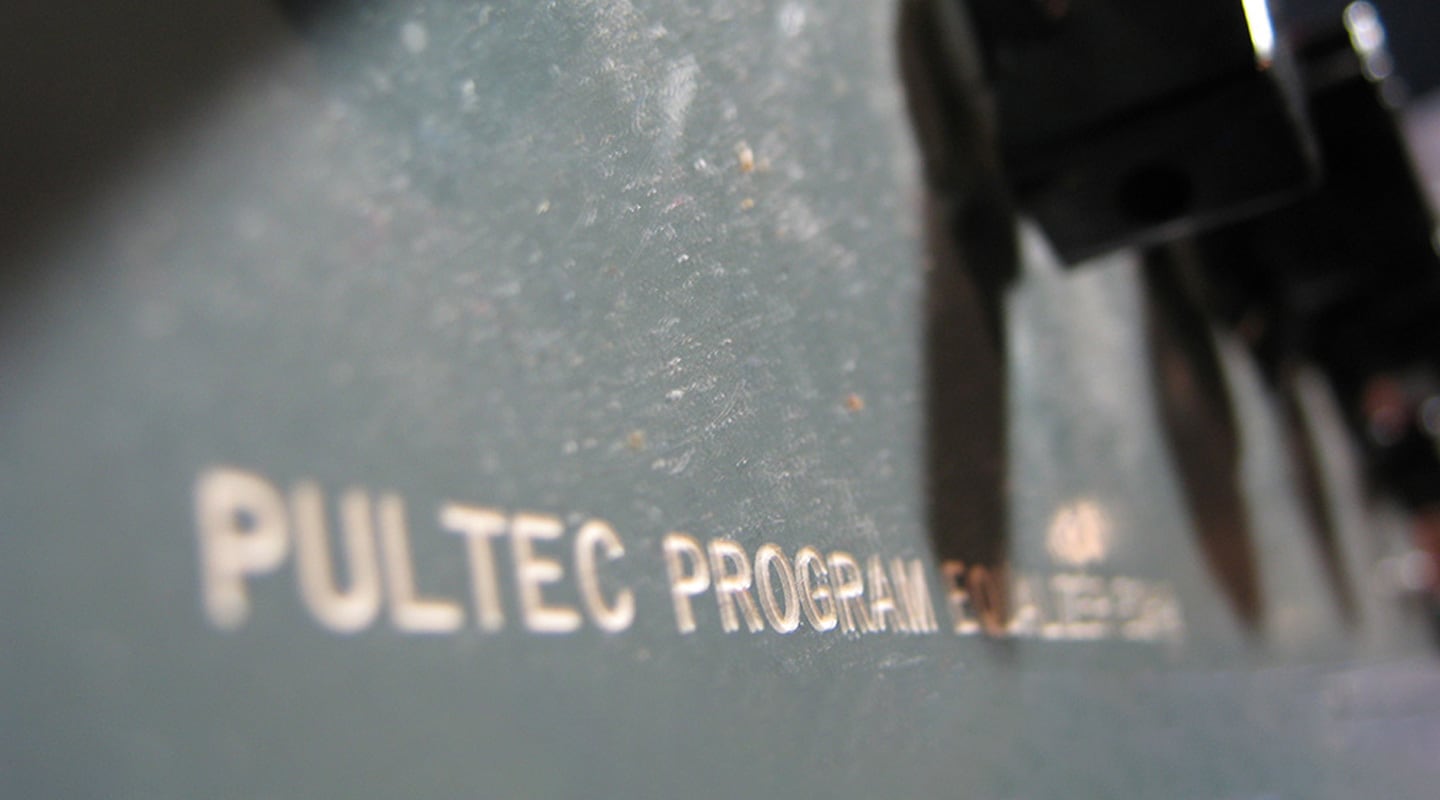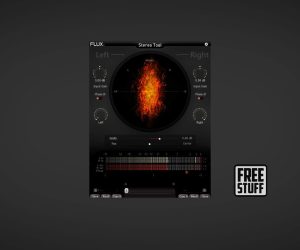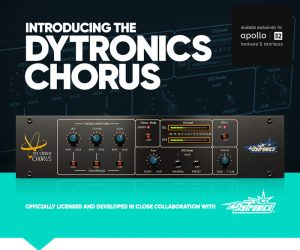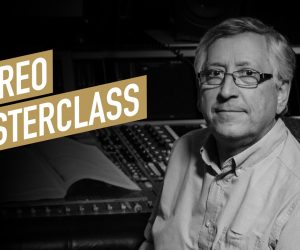
Stereo Mixing: The Art, The Science, The Fiction (Part 2 – EQ)
EQ is one of the broadest brush strokes a mix engineer can apply to the sonic canvas; it’s also one of the narrowest. Let’s set up the easel and push some paint around.
On the very rare occasions that I listen back to some of the earliest CDs I’ve mixed, the one aspect of my early work that makes me cringe the most is my choice of EQ. I’ve never been a heavy-handed mix bus compression guy – in fact, back in the beginning, I didn’t use one at all. So mercifully, in that respect, the early albums I worked on typically sounded pretty good; open and relatively dynamic. But when it came to EQ I tended to go a little overboard in hindsight, particularly in the top end.
In my own defence, I wasn’t far off the mark, and to some degree these albums can simply be seen as products of their time, but overall they now sound a little thin and bright, thanks in part to my over-exuberant use of this powerful and subtle mixing tool.
I suppose I could simply blame this on the Mackie console I frequently used, but even on SSLs, Harrisons, MCIs and Auditronix boards – which I drove less frequently – the results were often the same: a bit too bright. I suspect if you surveyed 100 mix engineers and asked them to define the tonal shortcomings of their early work, many of them would probably have similar misgivings.
The mics I owned back then weren’t great either. But that didn’t stop me. Determined as I was to make my mixes sound world class – and despite the limitations of my own gear and engineering skills – I naively tried to improve the recorded sounds at my fingertips with the only weapon I felt I had at my disposal, EQ. Experience has since shown me that no matter how good you become at fashioning a silk purse out of a sow’s ear, there’s no real substitute for well-recorded material – although the power of the computer has put this old adage under significant pressure of late. EQ is only one of several weapons in a mix engineer’s armoury but it’s important to reaffirm – before any conversation about mixing begins – that a good mix is nearly always derived from a good recording.
A WOLF IN SHEEP’S CLOTHING
At first glance, equalisation seems like a piece of cake. Whereas many view compressors as those terrifying contraptions requiring a special driver’s license, a similar number think equalisers are harmless. Consequently, inexperienced engineers get behind the wheel of these devices like drunk drivers, swerving this way and that with no real grasp of the direction they’re headed in. But an equaliser is every bit as deadly as a compressor. Sure, they’re more extroverted and immediate than the obtuse and elusive gain controller, but that doesn’t make them safe. You can easily steer your mix into a wall with equalisation, and when you do, compression won’t save you.
Although EQ is one of the cornerstones of mixing, it’s often misunderstood to be the Mr Fix-It in each and every situation, but of course it’s not. Let’s look at a few instances where it works and where it doesn’t shall we? Strap yourself in.
First up, let’s look at one of the most powerful equalisation tools available to any mix engineer on any console – volume. This is without question one of the most important concepts to understand if you ever hope to become a successful mixer, and possibly the most commonly overlooked. How you perceive a sound within a mix is most fundamentally determined by its volume. Without overstating it, volume determines everything.
VOLUME & TONE ENTWINED
For as long as you mix audio, you’ll repeatedly find yourself in the situation where you or your colleagues perceive a sound to be in need of tonal adjustment. But out of 100 such instances probably 50 of them will require a simple volume adjustment rather than EQ.
The merry dance between volume and tone continues right throughout the course of a mix, from the moment you begin right up until it’s time to print. And why is that? Because boosting and cutting frequencies – changing the tone – is a volume adjustment, albeit one that’s frequency conscious. It’s never a static process. EQs are rarely if ever set and then forgotten, or established one channel at a time in isolation with a solo button. The interaction of volume and tone is subtle and complex but never separate. This is why, for instance, when a vocal is unwittingly placed too low in a mix, it also often winds up sounding too bright and sibilant: top-end is desperately added in an attempt to increase the clarity of the voice when all along the only adjustment it required was to be turned up, or more effectively compressed.
It’s not something that anyone should necessarily need to be reminded of, but I’ll state it anyway: boosting or cutting a signal with EQ is only another form of gain control. An EQ with three bands of boost and cut, for example, is effectively like having three little faders halfway up the console. Turn them all up and all you’ve really done is boost the overall level, albeit with some frequencies lagging behind and unwelcome phase anomalies introduced by the EQ circuit. So the next time you see all your EQ gain controls cutting (or boosting) a signal, it might be an indicator that your adjustment should have been made on the channel’s main fader instead.
The first lesson to learn before you start hacking into a sound with EQ – regardless of whether it’s to increase its visibility or lessen its impact in the mix – is to ask yourself the simple question: “Is the sound I’m focused on playing at the right volume?” If the answer is ‘no’, change it at the fader, not at the EQ. One other point to make about this: in my experience, it’s quite rare to turn a sound up or down in the mix more than a few decibels without then reconsidering its tone. This is not a mental process either, nor a decision based on a theory, I do it because it’s intuitively necessary.

High-Pass Filter – If searching for the right EQ is like fishing then a high-pass filter is like a net with big holes; smaller fish pass through it and only the large fish are caught.

Low-Pass Filter – This net catches only small fish; the big fish swim right past it. A filter like this can be added to things like shrill guitars and metallic cowbells, softening their ‘exposure’ in the mix while leaving the fundamentals of the sound intact.

This is an example of a heavily-filtered tone with a kick in the midrange. This sort of radical EQ can often pull more focus than merely adding tops to an instrument, suitable for things like kick-drum beater mics or incidental backing vocals. But this is obviously meant as a guide only.

A main kick drum mic can often end up being EQ’ed something like this (again, this is a guide only). Lifting the sub-harmonics and reducing the boxier low-mids has the dramatic effect of making the drum appear bigger than it is. The midrange component adds a touch more bite – this parameter is often automated to ensure the kick remains defined throughout). Hi-end boost exposes the air in the drum, often to great effect on open songs.

A vocal EQ might look something like this, but again, this curve is purely for illustrative purposes. Not much occurs below about 60Hz on a vocal mic other than people moving their feet, traffic noise and air-conditioning. Lose it if it’s filled with garbage. It’s a waste of energy.
LAYER CAKE TONE
Another similar aspect of EQ that’s particularly relevant to today’s mixing methods is the use of multi-miking or layering samples to create a sound. Again, in this situation, it’s not strictly the EQ that determines the tonality of the sound but rather the relative levels of the component parts. A simple example of this would be where an electric guitar is recorded with two mics: a tough midrange-focused SM57 (let’s say) and a full and juicy U67. In this arrangement – assuming the two mics are in phase – adding more bite to the sound might simply involve pushing more of the SM57 fader into the mix relative to the U67, rather than adding 3dB at 2kHz with an EQ. Conversely, a rounder, fuller guitar tone would be achieved by simply reversing these relative levels. Here again, the tone of the sound is dramatically altered without ever reaching for a bell, shelf, or filter. Of course, this isn’t meant to infer that EQ’ing the signal is an invalid approach at this juncture, by all means try it; just remember that using faders is often a simple and very effective alternative. And the next time your plug-in count maxes out right as you attempt to insert that final automated EQ across the hi-hat on your latest masterpiece, try simply turning it up or down instead.
Another example of where this layering technique is effective is in the mixing of a kick drum. It’s often the case with this particular instrument (as with so many elements) that adjustments are continually made throughout the course of a track. Sometimes this occurs so the drum appears to sound the same throughout the song (even though it’s often changing substantially within the context of the track to create this illusion). At other times you might want the drum to change radically. In either situation, adjusting the relative levels of typically two mics (or several sampled sounds) will substantially alter the tone and clarity of the instrument without ever having to reach for EQ.
FILTERING OUT THE DROSS
Once the decision is made to engage an EQ, the best place to start is probably with the filters. Filters on a console – commonly referred to as low- or high-pass filters – are one of the most powerful and underrated aspects of good EQ, and vital to a well-balanced mix. Because they’re seemingly uncomplicated – usually involving just one knob – many people overlook them, falsely regarding them as inconsequential to a mix and choosing instead to reach for full parametric band-pass EQ. But a good filter is a powerful tool indeed. A high-pass filter (HPF), for instance, is ideal for controlling unnecessary low frequency energy in instruments and voices that can soak up headroom and cloud a mix. Electric guitars and voices rarely require sub-harmonic content in order to sound full-bodied and rich, yet most of the time, recordings of these instruments are awash with it. Taking such frequencies out of these types of instruments makes room for the naturally bass-heavy sounds like kick drums and bass guitars to flourish in their own space. Similarly, a low-pass filter (LPF) can work wonders on shrill guitars, cymbals and hard percussive instruments that often don’t require the amount of top-end they’ve been blessed with during the recording phase. This allows the top end of your tone to be controlled and shared only amongst those ingredients that demand it.
When everything in a mix contains lots of high-end content, the whole thing can become horribly bright and indistinct, like an overexposed picture. Remember, a balanced mix is built with contrast, and contrast is a relative term: one element can only be perceived as bright relative to another that’s dull. So mix your sounds up with light and shade, otherwise the results will sound two-dimensional and small. It’s also important to understand that a top-end control on an equaliser is a seductive weapon that can work against you to cheapen your sounds rather than intensify them. Not everything needs high-frequency information to sound good; sometimes it’s better to take some out and let the listener’s imagination make up the difference.
The next time your plug-in count maxes out right as you attempt to insert that final automated EQ across the hi-hat on your latest masterpiece, try simply turning it up or down instead.

TWO IS ENOUGH
The next time you have half an hour to kill in the studio (or even while you’re testing a PA with a pre-recorded soundcheck), try this simple task. See how far you can advance a mix using nothing more than volume and filters. You’ll be amazed how much top-end you can remove from some of those electric guitars, tambourines and close cymbal mics, and how much meaningless bottom end you can cut from vocals, acoustic and electric guitars. The definition of your mix will improve dramatically without any of the sounds appearing to change that much at all. But as with all EQ settings, filters can often be pushed a little too far, so it’s wise to constantly reassess how much they’ve encroached on your sounds. Sometimes they’re also forgotten during the course of a mix as things become more complicated and the focus moves elsewhere. So a word of warning about filters: they’re powerful, simple and subtle when used with a dispassionate ear, but they can wreak havoc if allowed to cut too deeply into your sounds.
EQ AS A FOCUS TOOL
One of the major ways to advance your skills with EQ is to think deeply and laterally about why you’re EQ’ing a sound in the first place. All too often people reach for EQs, compressors, reverbs and effects out of habit rather than necessity. The default setting: “I’m mixing therefore I must EQ every channel” is a mindless approach that will get you nowhere. So the next time you reach for an EQ, begin by asking yourself; ‘why, what has changed that demands this tonal shift?’ If it’s your imagination telling you: ‘I want it to sound distant and small’ then great, follow that thought. But if you’re doing it because someone who knows nothing about mixing is looking over your shoulder and you think twiddling knobs makes you look clever, don’t.
EQ is a powerful paintbrush for highlighting key elements in a mix. Unfortunately, people tend to confuse this concept with merely adding top end. The highlight brush is about focus not brightness. When a sound is vivid in a mix and attractive to your ear it’s not always because it’s the brightest sound or the loudest sound. There are many ways to pull focus, and while it may seem like the obvious thing to do, a top-end boost isn’t always the answer. Sometimes focus is best achieved with something counter intuitive, like removing all the tops and bottoms and hoisting the midrange.
‘But won’t my sound be ruined if I do that?’ you ask. Not at all. As long as your mix spreads itself wide across the frequency spectrum and offers the listener everything from sub-harmonics to super highs, the individual components within it are free to explore the space (no, not like that). Your mix is a self-supporting structure that only requires some of the sounds to act as foundations, not all of them. Chances are you recorded many of the instruments with full-bodied mics from several perspectives anyway, now it’s time to choose one.
Don’t fear removing extraneous tones from certain instruments, or your mixes will suffer from this indecision. Be confident and work with your instincts. By all means be wary of your actions, but whatever you do, don’t confuse caution with a fear of the unknown. Being paralysed by what lies on the other side of that radical tonal adjustment is no way to mix and often a sign of inexperience. Try it out. It might not work for the sound you’re focused on at the time, but there’s no shame in that. If your imagination and memory bank are open for business, the experience will serve you well down the track. Experiment with sonic alternatives and soak up the experience of hearing things from different perspectives. This will serve you well the next time you’re trying to resolve why an instrument is proving difficult to highlight. Which leads me to another issue…

SOLOING – THE DOUBLE-EDGED SWORD
Being able to isolate an individual signal (or group of signals) is an important function of any console, but using this feature habitually during a mix can distract you from the game, namely, putting all the sounds together. Every time you hit a solo button, you’re effectively doing the opposite. Establishing EQ settings by soloing each channel and constructing a tone in isolation is thus a potentially flawed enterprise. We’re not recording any more, let’s not forget, we’re mixing. It’s make or break time for all our sounds and the moment has arrived when we must discover how they all fit together. The recording process was an exploration into uncharted territory where great discoveries were made, but this is the journey home, and we’ve got to get back there in one piece.
Soloing is a powerful tool, don’t get me wrong, I use it all the time. But there are two things to remember about soloing an instrument for the express purpose of EQ’ing it. Firstly, by taking your sound out of its context, you’re generally going to act more conservatively, and potentially produce a sound that’s great in isolation but useless in context. Secondly, habitual soloing sets up an internal conflict that distracts you from the main aim. When an instrument sounds bad soloed but great in the mix you’ll invariably think to yourself; ‘Gee, that piano sounds pretty midrangey and hard on its own, I’d better back that off’. But if it’s perfect in context, why change it? During mixdown, it’s the context that matters, not the fidelity of every individual sound.
Where the technique of equalising sounds without the use of the solo function is perhaps best highlighted, is in the common circumstance where a sound refuses to ‘cut’ through a mix. Sometimes, no matter what you do you just can’t seem to get that sound to fight its way through the mayhem, right? I think it’s safe to say we’ve all been there. The next time this occurs, leave the sound in its context (don’t be tempted to solo it again – that trick has already failed you). Now shut your eyes. Manipulate the EQ blindly and listen for the point where your sound finds its own space. You’ll be surprised how many tonal vacancies there are in the mix you’ve already deemed impenetrable. Don’t be afraid of what the physical result might look like either. No one cares what you did with the controls. Ultimately, the EQ parameters mean nothing. Just make it sound good.
MIXER AS INTERPRETER
Describing how EQ works in a mixing environment is in many ways a bottomless pit. Unfortunately, there’s far more to this topic than space allows, so we’ll have to continue this discussion in a future issue. Just one last point before I sign off. As I said in my last article on mixing back in Issue 62, your brain is a past master at accommodating for shifts in tone. If you work for too long in one area your brain will recalibrate your perception and that initially bright, filtered tone you were startled by two minutes ago will quickly begin to sound ‘normal’ again. Switching back to the original tone will then sound dull and ‘heady’. Confused? If you find this happening, do yourself a favour and listen to something else for a change of scene, preferably something that your mix aspires to loosely emulate.
The other thing to listen out for is the opinion of those around you. A good mix engineer can absorb and interpret the conversations floating around the control room and evaluate the different points of view calmly and objectively. If you’re a mixer, you’re inevitably also an interpreter and even the most seemingly innocent comment from a passer by might afford you a fresh insight that will improve the mix further. As long as you’re open to suggestions and humble enough to absorb the information from anywhere – provided you know how to interpret it – you’ll be better at your job.
Till next time…
NEXT UP – DISTORTION
EQ is only one tool among many that’s used to manipulate tone in a mix. The next time we broach the topic of mixing, I want to talk about another aspect of aural perception that’s often misinterpreted as a job for the equaliser – distortion. Distortion is like arsenic: in high doses it can kill, but prescribed in the right amounts and administered correctly it can resuscitate a grey, lifeless and uninspiring recording.
PREVIOUSLY…
Mixing is becoming more and more complicated as the years progress. With track counts inevitably on the rise what do you do when faced with a complex mix, and how do you learn to do it well?
















RESPONSES